Home> Technical Articles> The Best Hydraulic Pump Controllers
- AddressNo.1875 East Changjiang Road, New District, Wuxi, Jiangsu,China
- Factory AddressNo.1875 East Changjiang Road, New District, Wuxi, Jiangsu, China
- Worktime9:00-18:00
- Phone(Working Time)86-510-85310167
Hydraulic systems are commonly used in various industries and applications, and their efficiency depends on the proper functioning of various components, including the hydraulic pump controller. Hydraulic pump controllers play a crucial role in regulating the flow and pressure of hydraulic systems to optimize their performance, reduce energy consumption, and extend the lifespan of the hydraulic pump. In this article, we'll explore the importance of hydraulic pump controllers and discuss some of the best hydraulic pump controllers available in the market to help you make an informed decision when selecting one for your hydraulic system.
Variable Frequency Drives (VFDs)
Variable frequency drives (VFDs) are one of the most popular types of hydraulic pump controllers available in the market. They are designed to adjust the speed of the motor that powers the hydraulic pump, which in turn allows you to control the flow rate of the hydraulic system. VFDs are often used in applications where the flow requirements of the hydraulic system can vary widely.
The primary advantage of using VFDs is that they help to reduce energy consumption by matching the speed of the motor to the flow requirements of the hydraulic system. By running the motor at the optimum speed, you can minimize energy waste and reduce your overall energy costs.
VFDs also help to increase the lifespan of the hydraulic pump by reducing wear and tear on the system. By adjusting the speed of the motor to match the flow requirements of the hydraulic system, you can prevent the system from operating outside of its designed parameters, which can lead to premature failure of the pump.
Another advantage of using VFDs is that they can help to reduce the need for maintenance. By reducing wear and tear on the hydraulic pump, you can extend the time between maintenance intervals, which can save you time and money in the long run.
VFDs are also highly flexible and can be used in a wide range of applications. They're commonly used in industrial and manufacturing settings, as well as in mobile hydraulic systems, such as construction equipment, agricultural machinery, and mining equipment.
Overall, VFDs are an excellent choice for controlling the flow rate of hydraulic systems, and they offer a range of benefits, including energy savings, extended equipment lifespan, and reduced maintenance requirements.
Pressure Compensated Controllers
Pressure compensated controllers are a type of hydraulic pump controller that is used to maintain a constant pressure in the hydraulic system by adjusting the flow rate. They work by sensing the pressure of the hydraulic fluid and adjusting the flow rate to maintain a consistent pressure.
Pressure compensated controllers are useful in applications where the pressure requirements can vary widely, such as in mobile hydraulic systems. In these systems, the pressure requirements can change rapidly as the load on the system changes. Pressure compensated controllers can help maintain a consistent pressure in the system, even as the load changes.
One of the main advantages of pressure compensated controllers is that they help to reduce energy consumption. By maintaining a constant pressure in the hydraulic system, they prevent the pump from working harder than necessary, which can help reduce energy consumption and save money on operating costs.
Another advantage of pressure compensated controllers is that they can help to extend the life of the hydraulic pump. By maintaining a consistent pressure in the system, they help to prevent excessive wear and tear on the pump, which can help extend its lifespan and reduce the need for maintenance.
There are several different types of pressure compensated controllers available in the market. Some of the most common types include:
-
Pre-compensated controllers - These controllers use a mechanical valve to regulate the flow rate in the system. They're simple and reliable, but they can be less accurate than other types of pressure compensated controllers.
-
Post-compensated controllers - These controllers use an electronic valve to regulate the flow rate in the system. They're more accurate than pre-compensated controllers, but they can be more complex and expensive.
-
Load-sense pressure compensated controllers - These controllers are designed to monitor the load on the hydraulic system and adjust the flow rate accordingly. They're useful in applications where the load on the system can vary widely, such as in mobile hydraulic systems.
Overall, pressure compensated controllers are an excellent choice for applications where maintaining a consistent pressure in the hydraulic system is critical. They can help reduce energy consumption, extend the life of the hydraulic pump, and improve overall system performance.

Load Sensing Controllers
Load sensing controllers are electronic devices that monitor the load on a hydraulic system and adjust the flow rate accordingly. They ensure that the hydraulic pump supplies only the amount of flow needed to meet the system's demands, which helps to reduce energy consumption and increase the lifespan of the pump.
Load sensing controllers are particularly useful in applications where the load on the hydraulic system can vary widely, such as in mobile hydraulic systems used in construction, mining, and agriculture. These systems often require high power output and need to operate at maximum efficiency to reduce fuel consumption and increase productivity.
Load sensing controllers work by measuring the pressure differential across a load sense signal line. This signal line is connected to a hydraulic cylinder or motor and provides feedback on the load demand. The controller then adjusts the flow rate to match the demand, ensuring that the system operates at peak efficiency.
There are two main types of load sensing controllers: open loop and closed loop. Open loop controllers are simpler and less expensive but are less precise in their control of the system. Closed loop controllers, on the other hand, are more precise and can provide faster response times, but are more expensive and complex to install and maintain.
Some of the benefits of load sensing controllers include:
-
Energy efficiency: Load sensing controllers help to reduce energy consumption by ensuring that the hydraulic system only uses the amount of flow needed to meet the load demand. This helps to minimize waste and reduce fuel consumption, which is especially important in mobile hydraulic systems.
-
Increased system lifespan: Load sensing controllers help to reduce wear and tear on the hydraulic system by minimizing pressure fluctuations and ensuring that the system operates at peak efficiency. This can help to extend the lifespan of the hydraulic pump and other components, reducing maintenance and repair costs.
-
Improved productivity: Load sensing controllers help to ensure that the hydraulic system operates at maximum efficiency, which can help to increase productivity and reduce downtime. This is especially important in applications where time is critical, such as in construction and mining.
Overall, load sensing controllers are an important component of hydraulic systems that can help to optimize their performance and reduce energy consumption. Choosing the right load sensing controller for your application depends on the specific requirements of your system, and it's important to consult with a hydraulic system expert to ensure you get the best solution for your needs.
Proportional Pressure Controllers
Proportional pressure controllers are another type of hydraulic pump controller that maintains a constant pressure in the hydraulic system by adjusting the flow rate. These controllers use feedback from pressure sensors to adjust the flow rate, which helps to maintain a stable pressure in the system.
Proportional pressure controllers work by comparing the system pressure with a reference pressure, and then adjusting the flow rate of the hydraulic pump to maintain a constant pressure. They're useful in applications where the pressure requirements are critical, such as in the aerospace and automotive industries.
One of the primary advantages of proportional pressure controllers is their ability to maintain a precise pressure control. Since they use feedback from pressure sensors to adjust the flow rate, they can quickly respond to changes in the system's pressure and adjust the flow rate accordingly.
Proportional pressure controllers are also energy efficient, as they can adjust the flow rate to match the system's needs. This helps to reduce energy consumption and increase the lifespan of the hydraulic pump.
However, proportional pressure controllers can be more expensive than other types of hydraulic pump controllers, and they can be more complicated to install and set up. They also require regular maintenance to ensure that they're working correctly and accurately.
Overall, proportional pressure controllers are an excellent choice for applications where precise pressure control is essential, and energy efficiency is a priority. If you're considering using a proportional pressure controller in your hydraulic system, it's important to consult with a hydraulic system expert to ensure that you choose the right controller for your specific application requirements.
Flow Dividers
Hydraulic flow dividers are devices that help distribute the flow rate of a hydraulic system evenly between two or more hydraulic circuits. They are designed to ensure that each circuit receives the required flow rate to operate efficiently.
Flow dividers come in two types: fixed and adjustable. Fixed flow dividers distribute the flow rate equally between two or more circuits and cannot be adjusted. Adjustable flow dividers, on the other hand, allow you to adjust the flow rate between circuits to meet specific application requirements.
Flow dividers are commonly used in applications where multiple hydraulic circuits are connected in parallel. For instance, a hydraulic system that powers a machine with several hydraulic actuators may require multiple circuits to operate the actuators simultaneously. The flow divider ensures that each actuator receives the required flow rate to operate efficiently.
Flow dividers can also be used to synchronize the movement of hydraulic actuators. In applications where multiple actuators need to move at the same speed, flow dividers help to ensure that each actuator receives the same flow rate to maintain synchronization.
When selecting a flow divider, it's essential to consider the specific application requirements. Fixed flow dividers are ideal for applications where the flow rate requirements are constant and do not change. Adjustable flow dividers are suitable for applications where the flow rate requirements can vary, and you need to adjust the flow rate between circuits.
It's also crucial to select the appropriate size of the flow divider to ensure that it can handle the required flow rate of the hydraulic system. Consult with a hydraulic system expert to determine the appropriate size and type of flow divider for your specific application.
Regular maintenance of flow dividers is essential to ensure that they function correctly. Check the flow divider for leaks, and inspect it for any signs of wear or damage. If you notice any issues, it's important to replace the flow divider immediately to prevent any further damage to the hydraulic system.

Hydraulic pump controllers are a crucial component of hydraulic systems. They help to manage the flow and pressure of hydraulic systems to optimize their performance, reduce energy consumption, and minimize wear and tear on the system. In this article, we have explored some of the best hydraulic pump controllers available in the market.
Variable Frequency Drives (VFDs) are one of the most popular types of hydraulic pump controllers available in the market. VFDs help to adjust the motor's speed, which allows you to control the flow rate of the hydraulic system. By adjusting the flow rate, VFDs reduce energy consumption and increase the lifespan of the hydraulic pump. VFDs also reduce the need for maintenance, making them an excellent choice for hydraulic systems.
Pressure compensated controllers are another popular type of hydraulic pump controller. These controllers help to maintain a constant pressure in the hydraulic system by adjusting the flow rate. They're useful in applications where the pressure requirements can vary widely, such as in mobile hydraulic systems. Pressure compensated controllers help to reduce energy consumption and increase the lifespan of the hydraulic pump.
Load sensing controllers are designed to monitor the load on the hydraulic system and adjust the flow rate accordingly. These controllers are useful in applications where the load on the system can vary widely, such as in mobile hydraulic systems. By adjusting the flow rate, load sensing controllers help to reduce energy consumption and increase the lifespan of the hydraulic pump.
Proportional pressure controllers are designed to maintain a constant pressure in the hydraulic system by adjusting the flow rate. These controllers use feedback from pressure sensors to adjust the flow rate, which helps to maintain a stable pressure in the system. They're useful in applications where the pressure requirements are critical, such as in the aerospace and automotive industries.
Flow dividers are a type of hydraulic pump controller that's used to distribute the flow rate evenly between two or more hydraulic systems. They help to ensure that each system gets the required flow rate to operate efficiently. Flow dividers are commonly used in applications where multiple hydraulic systems are connected in parallel.
Choosing the right hydraulic pump controller depends on the specific application requirements. It's important to consult with a hydraulic system expert to ensure you get the best solution for your needs. With the right hydraulic pump controller, you can optimize the performance of your hydraulic system, reduce energy consumption, and minimize wear and tear on the system.


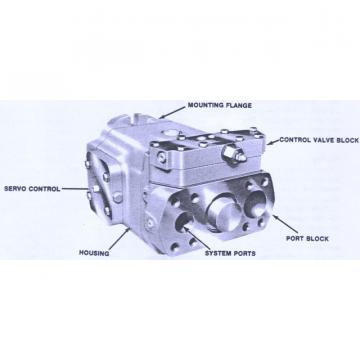 Dansion gold cup piston pump P30P-8L5E-9A4-A00-0B0
Dansion gold cup piston pump P30P-8L5E-9A4-A00-0B0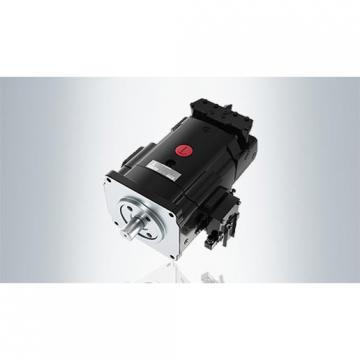 Dansion gold cup piston pump P30P-8L5E-9A2-B00-0C0
Dansion gold cup piston pump P30P-8L5E-9A2-B00-0C0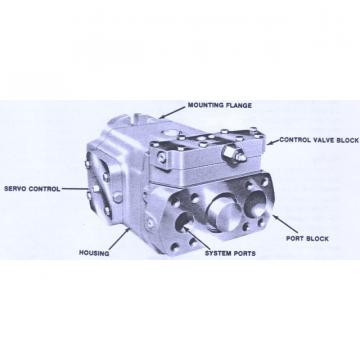 Dansion gold cup piston pump P30L-8L5E-9A7-A0X-B0
Dansion gold cup piston pump P30L-8L5E-9A7-A0X-B0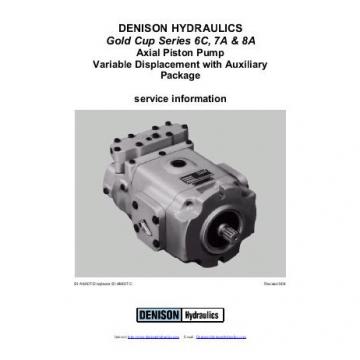 Dansion gold cup piston pump P30P-2R5E-9A7-B00-0C0
Dansion gold cup piston pump P30P-2R5E-9A7-B00-0C0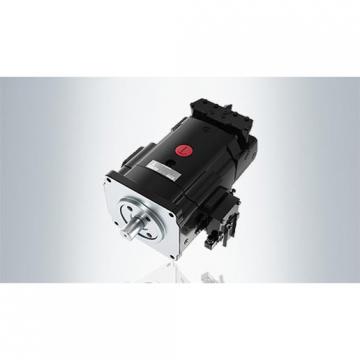 Dansion gold cup piston pump P30L-7R5E-9A2-A0X-D0
Dansion gold cup piston pump P30L-7R5E-9A2-A0X-D0